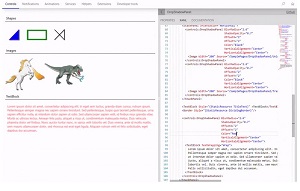News
UWP Community Toolkit 2.0 Released, for Aiding Windows 10 App Development
Microsoft released version 2.0 of the UWP Community Toolkit, a package of helper functions, controls and services for simplifying common tasks involved in coding Universal Windows Apps for Windows 10.
The open source kit includes animations, controls, code helpers, notifications, services (such as connecting to cloud resources such as Bing, Facebook and Twitter) and more.
Microsoft's Nikola Metulev said the kit's development has been aided by more than 100 contributors, and packages have been downloaded more than 250,000 times.
The year-old project is being aligned to leverage new APIs included in the coming Windows 10 Fall Creators Update. It will also support the new Fluent Design System ("an eloquent design system for a complex world").
"The Fluent Design System defines several foundational elements that will make new designs perform beautifully across devices, inputs and dimensions," Metulev said.
"To prepare for the general availability of the Fall Creators Update later this year, the community has committed to update all UWP Community Toolkit controls to adopt Fluent Design. Over the coming months, new and existing controls will be updated to support light, depth, material, motion and scale. The sample app will also be updated to take full advantage of the new foundational elements to demonstrate what is possible."
Metulev also noted plans to extend the reach of the kit beyond UWP, in response to community feedback. Initial efforts to that end include two new packages in version 2.0. Called Microsoft.Toolkit and Microsoft.Toolkit.Services, Metulev said of the packages: "These packages are built with .NET Standard and support any platform with .NET Standard 1.4 and above. The Bing Service is the first API to go cross-platform and there is currently work underway to move more services to the new packages."
The UWP Community Toolkit Sample App, created to help developers get started with the kit, has also been updated. For example, it now allows for editing XAML markup code and immediately seeing changes.
"This is a very powerful addition that allows developers to get started with development immediately by simply downloading the app from the store," said Metulev, who also pointed out enhancements such as a redesigned navigation model, improvements to various controls and more.
 [Click on image for larger, animated GIF.] UWP Community Toolkit in Animated Action (source: Microsoft).
[Click on image for larger, animated GIF.] UWP Community Toolkit in Animated Action (source: Microsoft).
The release notes list all the new changes. A getting-started tutorial is also available.
The kit is available for installation from the Windows Store or as a Visual Studio NuGet package for new or existing C# and VB.NET projects. Its source code is available on GitHub.
Although it focuses on desktop UWP app development for Windows 10, it can also be used with any Windows 10 device, including mobile, Xbox One, Internet of Things (IoT), Surface Hub devices and HoloLens.
About the Author
David Ramel is an editor and writer at Converge 360.